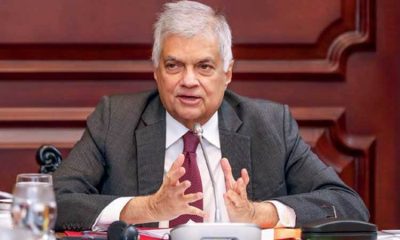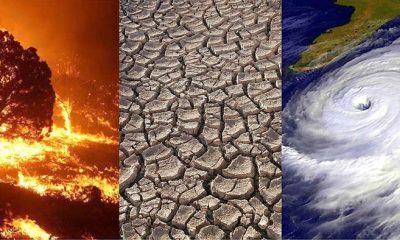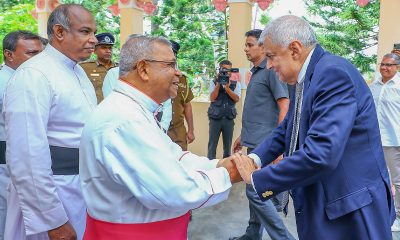Opinion
Accountability needed to make debt restructuring more equitable
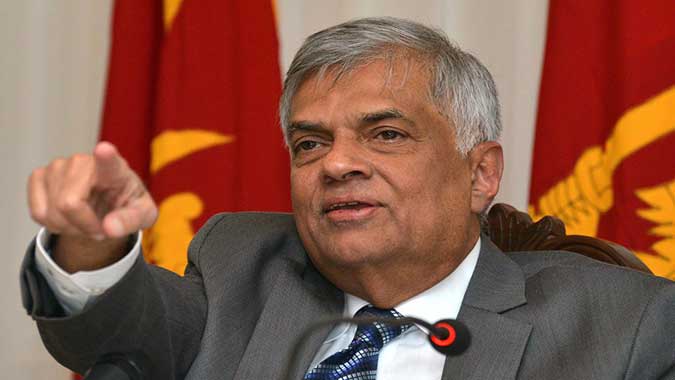
by Jehan Perera
President Ranil Wickremesinghe notched up another achievement when Parliament ratified the Domestic Debt Restructuring (DDR) programme with a majority of 60 votes, with 122 members voting for and 62 against, with 40 abstentions. Parliamentarians who would need to think about their re-election prospects would have been reluctant to vote for a programme that imposes more burdens on an already burdened population.
But the President stood his ground, and by his vision of the country’s economic future, and the rest of the government acquiesced. The President has been successful in steering the ship of state into calmer waters. He is also setting in place laws, like the proposed Anti Terrorism Act, the Broadcasting Authority Bill and the anticipated NGO Act, which could be used in a sophisticated way to silence critics and to immobilize them.
Now that the ship is nearing safe harbour, and the necessary second tranche of IMF support, the challenge for him will be to ensure that some of the more ambitious members of the crew do not think they can manage without him. It is frightening to think of how the Anti Terrorism Act, the Broadcasting Authority Act and the NGO Act could be used if that arsenal of repressive laws was to be in the hands of those who may choose to act in the manner of pirates.
President Wickremesinghe took charge of the ship of state after it had been driven into the midst of a cyclone by another skipper and his crew. In both 2001-04 and again in 2015-19, the President over-estimated his ability to outwit and outmaneuver the others he was sharing power with. On this occasion, too, there is a danger of a repeat. A foretaste of things to come was displayed by the absence of some of the top leaders of the ruling party when the vote was taken.
The passengers on the ship of state need to be treated better so they will not support a change of skipper in the case of a revolt by the crew. There is no question that the burden of the DDR programme has been laid on the masses of people. It comes after an initial inflation rate of 70 percent last year that virtually halved the savings of the people has been followed by continuous inflation although now at a lower rate, said to be around 12 percent last month. In its DDR plan, the government has taken care to safeguard the remaining half of the people’s savings by treating the banks favourably.
In so safeguarding the banking system, the government has also safeguarded the interests of the corporate sector who generate new wealth. It has also acquiesced in the unjust argument of international creditors that the local population should shoulder the pain of losing part of their wealth. The international creditors knew the risks they were taking when they invested in Sri Lankan bonds, they did so voluntarily because of the huge profits they could make. By way of contrast, the Sri Lankan people who are now called upon to share the burden of debt restructuring with them had no such options while those who were responsible for bringing Sri Lanka to this sorry state are continuing to benefit from the reforms being instituted.
INEQUITABLE TARGETING
It appears that the main casualty of the DDR programme are the pension funds (EPF and ETF) which the government established as one-time payments made at the time of retirement and as an alternative to providing people with a lifelong pension. Although Sri Lanka has long prided itself on being a welfare state that provided everyone with free health, education and foodstuffs (at one time), it never provided universal social security so that those who have no jobs or who are too old to have jobs can survive with a measure of dignity.
The government’s decision to target the EPF and ETF pension funds for a 30 percent tax is unjustifiable, even though the government has tried to justify it. The government has stated that the pension funds have only been taxed at 14 percent whereas the banks have been taxed at 50 percent. The pension funds are being offered a Hobson’s choice.
Thomas Hobson (1544–1631), a horse owner in England, is reputed to have offered customers the choice of either taking the horse in his stall nearest to the door or taking none at all. The pension funds are being offered the option of having their income taxed at 30 percent which is more than double their current rate or agreeing to have their investments in government bonds receive much lower interest payments.
The problem with giving the pension funds the option of paying high tax rates or obtaining low interest rates is that pension funds consist of aggregates of individual entitlements which, if they were taxed individually, would be subject to only a low level of tax. This is as it should be, as these relatively small EPF and ETF entitlements, a few million rupees for the vast majority of EPF and ETF holders, are going to be their only savings for them to live the rest of their lives. Sri Lanka does not provide lifelong social security or pensions (other than to public servants) like most other civic-minded countries do.
In addition, contributions to EPF and ETF have been made after paying taxes prior to making remittances. From this perspective, contributors are being taxed twice.
The unfairness of using the EPF and ETF funds as the way to reduce the government’s debt obligations is made worse by two omissions. The first omission is that the government is not taking measures to recover the massive loans given by banks, particularly the state banks, to errant corporate entities and politically connected individuals. The second omission is not taking measures to recover stolen assets. This was a key demand of the protest movement last year that brought President Wickremesinghe unexpectedly and serendipitously to power.
NO ACCOUNTABILITY
A key opposition leader Prof G L Peiris has summarized the injustice of the government’s DDR programme. He has said of the investors who are being protected that “Their motive was to make use of the perilous state of our economy to make a killing. They sought unconscionable profits in as short a time as possible. While the rates payable to these wealthy investors are left untouched, interest to be earned by the working people who are beneficiaries of the EPF has been reduced by the rate of income tax payable by the EPF being increased from 14 percent to 30 percent if fund declined to participate in the seriously flawed DDO exercise,”
Newspaper editorials have made these points. The Sunday Times has said “These economic reforms will need to extend for many years to come for favourable results to be seen. This may be only phase one of the DDO. The question every citizen asks, however, is; why are the twin ‘untouchables’ – the ten big debtors – the big boys, the local Robber Barons, who have borrowed multiple billions from local banks and not settled their loans but who continue to laugh all the way to the banks are not touched; and is it because of their political connections. And why those responsible for the country’s economic misery are issued with a ‘Get out of Jail’ card as well?”
The Island
newspaper in its editorial has said “The EPF by statute was required to invest a vast majority of their funds in government securities which till Thursday were considered gilt-edge investments. The shenanigans of the EPF in investing in the stock exchange and being used as a victim of pump-and-dump scams are well known. No one has been brought to account for those misdeeds, but millions of taxpayers are once again asked to share the pain of nursing a bankrupt nation to viability.” What is notably missing in the government DDR programme, and in its overall governance, is accountability.
Since the war ended bloodily on the military battlefield, Sri Lanka has been hauled over the coals in international human rights forums, especially the UN Human Rights Council in Geneva. The missing dimension there, too, is accountability for serious human rights violations. The point of going through the transitional justice process of truth, accountability, reparations and institutional reform is to ensure non-recurrence.
The same holds true for economic crimes, such as those that brought down the economy of a country that had reached upper middle income status in 2018 by those who showed no responsibility in terms of protecting national security and the national economy. The ship of state needs a new crew who would be accountable to the passengers so that the vicious cycle of inefficient and dishonest governance, corruption and economic collapse will not recur.
Opinion
Maha Jana Handa at Nugegoda, cyclone destruction, and contenders positioning for power in post-NPP Sri Lanka – I
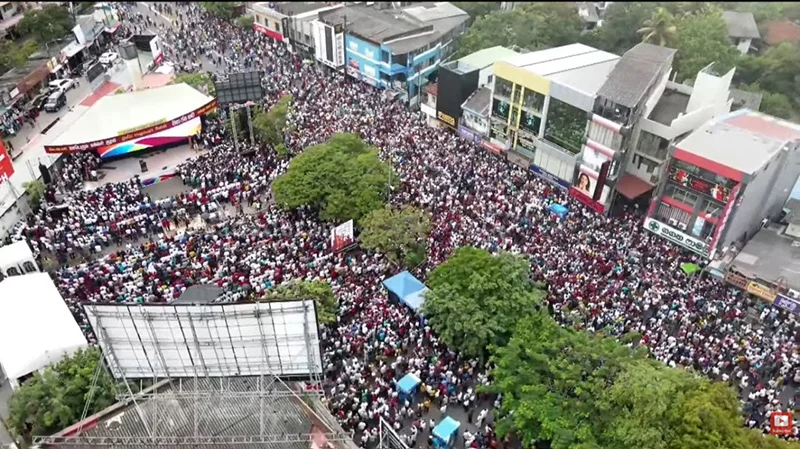
The Joint Opposition rally dubbed the ‘Maha Jana Handa’ (Vox Populi/ Voice of the People) held at the Ananda Samarakoon Open Air Theatre, Nugegoda on 21 November, 2025 has suddenly acquired a growing potential to be remembered as a significant turning point in post-civil conflict Sri Lankan politics, in the wake of the meteorological catastrophe caused by the calamitous Ditwah cyclonic storm that devastated the whole country from north to south and east to west on an unprecedented scale. But the strength of this prospect depends on the collective coordinated success of the future public awareness raising rallies, promised by the participating opposition parties, against the incumbent JVP-led NPP government. They are set to expose what they perceive as the government’s utterly inexperienced and unexpectedly authoritarian stand on certain vitally important issues including the country’s national security and independence, political and economic stability, and the Lankan state’s unitary status. The government is also alleged to be moving towards establishing a form of old-fashioned single party Marxist dictatorship in place of the firmly established system of governance based on parliamentary democracy, which was almost toppled by the adventitious Aragalaya protest of 2022 but saved by the timely intervention of some patriotic elements.
The minefield of policy making that the government must negotiate is strewn with issues including, among others: the seven or so recent agreements or MOUs (?) secretly signed with India; the unresolved controversy over the allegedly illegal clearance of some 323 containers (with unknown goods) without mandatory Customs inspection, from the Colombo Port; the Prime Minister’s arbitrary, apparently ill-considered and hasty education reforms without proper parliamentary discussion; the proposed culturally sensitive lgbtqia+ legislation non-issue (it is a non-issue for Sri Lanka, given its dominant culture); the so-called IMF debt trap; dealing with the unfair, virtually unilateral UNHRC resolutions against Sri Lanka; the inexplicably submissive surrender of the control of the profit-making Colombo Dockyard PLC to India; some government personal assets declarations that have raised many eyebrows, and the government’s handling of anti-narcotic and anti-corruption operations. The opposition politicians relentlessly criticise the ruling JVP/NPP’s failure to come out clean on these matters. But they themselves are not likely to be on an easy wicket if challenged to reveal their own positions regarding the above-mentioned issues.
In addition to those problems, the much more formidable challenge of unsolicited foreign-power interference in Sri Lanka’s internal affairs, in the guise of friendly intervention, remains an unavoidable circumstance that we are required to survive in the geostrategically sensitive region where Sri Lanka is located. Having been active right from the departure of the British colonialists in 1948, the foreign interference menace intensified after the successful ending of armed separatist terrorism in 2009. Such external interferences are locally assisted by latent domestic communal disharmony as well as real political factionalism, both of which are normal in any democratic country.
The war-winning President Mahinda Rajapaksa, as the leader of the SLFP-led United People’s Freedom Alliance (UPFA), was made to suffer a largely unexpected electoral defeat in 2015 through a foreign-engineered regime change operation that tacitly favoured his key rival, UNP leader Ranil Wickremesinghe. Mahinda was betrayed by his most trusted lieutenant Maithripala Sirisena.
The SLFP, a more middle of the way socialist-leaning rival political party, was formed in September 1951—five years after the birth of the UNP—and was elected to power in 1956, ending a near decade under the rather West-friendly latter party. It was deemed to be a ‘revolution’ that started an era of ‘transition’ (from elitist to common citizen rule). From nominal independence in 1948, governing power has to date alternated between these two parties or alliances led by them, except for the last electoral year, 2024. Though incumbent Executive President Anura Kumara Dissanayake may be said to have made history in this sense, the fact remains that he was barely able to scrape just 43% of the popular vote as the head of a newly formed, JVP-led NPP. Dissanayake was sworn in as President in September 2024. But his less than convincing electoral approval triggered a massive victory for the NPP at the parliamentary election that followed in November, giving him a parliament with 159 members, which is unprecedented in Sri Lanka’s electoral history.
In my opinion, there are two main reasons for this outcome. One is that the average Sri Lankan voters trust democracy. Since the president elect is accepted as having won the favour of the majority of the pan-Sri Lankan electorate, the general public choose to forget about their personal party affiliations and tend to vote for the parliamentary candidates from the party of the elected president. This is particularly true of the majority Sinhalese Buddhist community represented by the two mainstream, non-communal national parties, the UNP and the SLFP. The brittle foundation of that victory is not likely to sustain a strong enough administration that is capable of introducing the nebulous ‘system change’ that they have promised in their manifesto, while it is becoming clear that the general performance of the government seems to be falling far short of the real public expectations, which are not identical with the unconscionable demands made by the few separatist elements among the peaceful Tamil diaspora in the West, to whom the JVP/NPP alliance seems to owe its significantly qualified electoral success in 2024.
The Maha Jana Handa reminded me of the long Janabalaya Protest March from Kandy to Colombo where it ended in a mass rally on September 5, 2018. That hugely successful event was organised by the youth wing of the SLPP led by Namal Rajapaksa, who was an Opposition MP during the Yahapalanaya. He has played the same role just as efficiently on the most recent occasion, too. At the end of his address during the Maha Jana Handa, he declared his determination to bring down the malfunctioning JVP/NPP government at the earliest instance possible. Probably, he missed Ranil’s protege Harin Fernando’s speech that came earlier. This was because Namal Rajapaksa joined the rally midway. Harin had brought a message from his mentor Ranil to be read out to the rally audience. But he said he didn’t want to do so after all, saying that it was not suitable for that moment. Anyway, during his speech, Harin said emphatically that the era of heirs apparent or crown princes was gone for good. People knew that he was alluding to Sajith Premadasa and Namal Rajapaksa (sons of former Presidents hopeful of succeeding Anura Kumara Dissanayake). Harin was seen biting his tongue or sticking it out a little as he was preparing to leave the stage at the end of his address. Was he regretting what he had just said or was he cocking a snook at what, he was sure, was Namal’s ambition that would be revealed in his speech, the rally having been organised by the Pohottuwa or the SLPP? (To be continued)
by Rohana R. Wasala
Opinion
Lessons that should be learnt from Ditwah

Cyclonic storm Ditwah, named as such by Yemen referring to Detwah lagoon in one of its islands, caused severe devastation in Sri Lanka though it was categorised a weak tropical cyclone. When it hit on Thursday 27th November, the main problem was the unprecedented rain, some areas experiencing over 500 millimetres in 24 hours. Fortunately, wind speeds were not high reaching a maximum of only 45 mph, the sort of wind speed not infrequently encountered in the UK. In contrast, Hurricane Melissa, a category 5 storm which struck Jamaica, just a month ago, had winds reaching 185 mph! Though it was the most powerful storm to hit Jamaica ever, causing extensive damage across the island due to strong winds with added torrential rainfall causing landslides, the death toll was only 54 with further 15 people reported missing. It affected Cuba, Dominican Republic, and Haiti as well, with a further 48 deaths. Jamaicans were forewarned and were well prepared. It looks as if this did not happen in Sri Lanka. Though politicians are fighting over this aspect, despite it being not the priority, it is never too early to learn lessons. My comments that follow should not, in any way, detract from the very positive actions the government has taken and continues to do so, as well as the heroic efforts of volunteers putting their own lives at risk.
I did not realise the enormity till Friday (28) evening, when Ven. Teldeniyaye Amitha, who conducts a fortnightly Mindfulness meditation session over Zoom, told the participants that we should instead do Kindness meditation in view of the catastrophic situation in Sri Lanka. As soon as the session was over, I switched on to YouTube and was shocked by the images of destruction seen. When I contacted a good friend of mine in Kandy on Saturday 29th afternoon, what he told me made me realise that there were no warnings at all.
This lack of warning was not due to information being not available, I learned later. In fact, the DG of Meteorology has warned of an impending catastrophe when inclement weather was discussed on “Big Focus” programme broadcast over Derana TV on 12th November, in the presence of the DG of the Disaster Management Centre (DMC). It also further transpires that BBC World Service, the day before, accurately predicted that Cyclone Ditwah will cause heavy rainfall, up to 500mm, in Sri Lanka. Thus, there is no doubt that the government failed in its duty of adequate warning and taking action to minimise damage. Perhaps, it may have something to do with their labelling the DMC a ‘White Elephant’ in the past and threatening to dismantle it. Meteorological department’s lack of latest radar equipment is no excuse as information could be obtained from many sources. Some scientists whose sympathies are with the governing party seem to pronounce that weather predictions are unreliable. This may be so in the long term but, surely, BBC’s prediction the previous day, as well as the regular warnings sent by the Meteorological Service of India, should have been taken seriously. It is a great shame that the government does not seem prepared to admit that it made a mistake. Without that lessons cannot be learned!
It was disgusting to see a lady MP, who seems to be a loose cannon, having the audacity in parliament to blame Derana TV for broadcasting that programme! If true, it is more worrying that an opposition MP has stated in parliament that the Secretary of Defence has threatened the DG of Meteorology. In the latest turn of events, Deputy Minister Mahinda Jayasinghe has stated that the opposition should be sued for being silent on the weather warning! Does he not realise that by such loose talk he is helping the government to dig its own grave!
The other important question is whether the opening of sluice gates of reservoirs contributed to death and destruction. Some experts opine that had sluice gates been opened in advance to accommodate the expected torrential downpour, a significant amount of destruction and some deaths could have been avoided. This needs careful study, not to apportion blame, but to make sure that any future recurrences could be prevented. Considering the global changes in weather experienced, whatever the reason may be, we need to be prepared for this type of eventuality.
At a time of an unprecedented national emergency when cooperation of all was needed, the mudslinging on social media, both by supporters and opponents of the government, was despicable. There seems to be some truth to the accusations that the governing party goons hindered attempts by the opposition to help the affected, to claim credit for themselves! Do they think people in distress care whether ‘red stars’ are attached to aid packets?
The fact that the government seems incapable of taking criticism was made obvious by the actions of the Deputy Minister of Public Security. Though his Minister and the President subsequently denied that emergency powers would be used to suppress dissent,Watagala’s despicable behaviour, as well stated in the editorial “Emergency turns Jekyll into Hyde” (The Island, 5 December), deserves condemnation. There is a well justified suspicion that the Police are behaving as a paw of the ruling party, as two police officers with shadows over them were, plucked out of retirement, unashamedly appointed to two key positions as a reward for their political campaigning.
Perhaps, the comments made by Jaffna district MP, Dr Archchuna should make the government rethink, leave the past behind and act rationally. He told parliament that he had been rescued by Sinhala war heroes and sheltered in a Navy camp, criticising the government for insulting the armed forces. Considering the yeoman’s service rendered by the tri forces during this catastrophe, it is high time the governing party realised that service personnel are required at other times too, not only during war, and that they deserve the gratitude and the respect of the nation for saving us from terrorism too.
The best way to honour those who died during the recent disasters is by learning lessons from this tragedy so that we would be better equipped for any future emergencies. This could be done only if the government is prepared to eat humble pie and admit that mistakes were made. Do sincerely hope that they are big enough, and humble too, to do so!
By Dr Upul Wijayawardhana
Opinion
A 6th Year Accolade: The eternal opulence of my fair lady

The 6th of December marked the sixth solar cycle since my adored life partner, Dr Malwattage Josephine Sarojini Perera (née Peeris), left this mortal world. Six years have elapsed; a period characterised by a searingly perpetual heartache. However, her inspiring influence is not diminished by the passage of time, and her memory has become more burnished and sublimely potent. It has transformed from a painful void into a sparkling, indestructible legacy that fortifies the hearts of all who were privileged to share her path.
The abyss left by her departure is multitudinous for all of us, including those who benefited from her professional dedication. Nevertheless, the consciousness of her magnificent journey, a spectacular 72 years, 2 months, and 11 days on this planet Earth, remains as a seamless record of a unique chronicle. It was the radiance of her inner spirit that rendered her truly peerless. She epitomised the beautiful words of one of my favourite Sri Lankan lady singers, “Beauty is how you feel inside; you glow from within.” Sarojini was a woman of monumental dignity and benevolence, whose serene, consistent luminosity brought a radiance into every room she entered. Her smile was a glorious spectacle of her lovely inner human nature; a pure expression of her soul’s integrity. That spectacularly radiant smile epitomised the immortal words of the beautiful song by Nat King Cole, “Smile though your heart is aching, smile even though it is breaking, when there are clouds in the sky, you will get by.“
Throughout her tenure on earth, she embodied the highest form of selfless service, dedicating her energies wholly to our family unit, her relatives, and all her acquaintances. She served her patients with an unreserved commitment, functioning as the very milieu of abiding reassurance for them. Her chosen field in medicine was one of profound challenges and pressing needs. She primarily worked ever so tirelessly with individuals afflicted and affected by Sexually transmitted Diseases, HIV and AIDS. They were a cohort frequently marginalised, ostracised, and terribly wounded by societal judgment. Yet, this extraordinary woman approached her work with limitless compassion and an intrinsic, deep-seated sense of humanitarian duty. She held an irrefutable conviction that beyond the stark finality of any medical diagnosis, there was a human being whose entitlement to honour, consideration, respect and warmth was absolute.
Sophocles wisely said: “One word frees us of all the weight and pain of life: That word is love.” Sarojini’s approach to life was built upon this very word ‘love’ as its foundation. She remained steadfastly true to her ethical moorings, never wavering in her commitment to assuage suffering and nurture genuine understanding. Her patients were not mere cases receiving clinical attention; they were embraced into a circle of care that extended beyond the confines of the clinic. Sarojini’s gentle disposition and empathetic spirit captivated all those who came seeking relief and comfort in her ministrations.
She extended not only medical expertise but also essential emotional ballast, serving as a critical beacon of optimism in times of the most profound darkness and utter despair. Her engagement was holistic; she saw the complete person, not just the disease. The philosopher Kahlil Gibran expressed a sentiment that describes the core values of her life: “You give but little when you give of your possessions. It is when you give of yourself that you truly give.” Her affection emanated as a gentle, regenerative anodyne, calming the distressed spirits of those sighing in overwhelming heartache. Her bequest in this vital domain of medicine is not merely a record of treatments, but a register of hearts healed and spirits uplifted by unconditional acceptance and love.
Beyond her professional life, Sarojini was the gravitational centre of our existence; a loving spouse, an undaunted mother, and a precious confidante. The habitat and the canvas of love we built together were a haven of affection and composure, a place where joy thrived, and the air was often vibrant with shared merriment. She cultivated her family with boundless tenderness, sowing and nurturing the essential precepts of benevolence, rectitude, and resilience within us. In return, we never made her cry, but sometimes she cried for others, and some made her cry too.
Her capacity for quiet strength was remarkable; she could maintain perfect equilibrium even when confronted with severe setbacks, always taking deliberate, measured steps to restore serenity and balance. Her affection is a vibrant force that persists in the deepest recesses of our hearts, a covenant that triumphantly surpasses the limitations of physical existence and the transience of life. The deep impact of her role as a matriarch cannot be overstated; she was the silent architect of our moral framework and emotional stability, and the queen of our hearts.
As we reflect on her exceptional life and the vast bounty of goodness she left behind, our determination is not to be subdued by the grief of her physical absence, but rather, to eulogise the radiant splendour of her time amongst us. It is a legacy beyond epithets and the true portrayal of the lilting music of remembrance. We feel the unremitting pain of missing her absolutely and profoundly. She may have transitioned from this worldly realm, but her vital essence remains inextricably bound to ours, steering us with her quiet wisdom and inspiring us with her incomparable dignity. Sarojini’s life stands as an eternal affidavit to the transformative power of enduring love, deep empathy, and sacrificial duty. It remains a boon that richly augments our present and illuminates our future. True beauty, as she demonstrated, is not simply what the eyes can witness, but, more crucially, what the soul can permanently safeguard. What we perceive visually is destined to fade, but the treasures we store within our hearts will remain eternally.
Many, including myself, our daughter Maneesha and our grandchildren, Joshua, Malaika and Jaydon, have endeavoured with every available adjective and hyperbolic utterance to paint a faithful portrait of the superlative person that was Sarojini. Yet, even if we were to compile tomes detailing her excellence, the effort would still fall short of creating a realistic depiction that truly captures her profile. It is simply impossible to confine a description of her magnificence to even a substantial plethora of words.
For my part, I had the wonderful pleasure of the company of that stunning lady for all those blessed years, from the dawn of our courtship in 1973 until her fateful day of final rest. Despite the finality of that separation, memories remain the ultimate constant. I will forever recall her life as an exquisite and enduring strand, a beautiful composition, that will never diminish and will reverberate throughout the balance of my time on this planet Earth.
Sarojini, your loved ones strive daily to revere your memory by actively embodying the virtues you demonstrated so effortlessly: boundless compassion, humane benevolence, unbridled affection, and an unwavering commitment to the welfare of others. This is a matter of seminal importance to us, as it is a pledge towards the continuity of the very matrix of your tapestry of life on Mother Earth.
Darling Sara, I will end with a couple of lines from the 1996 Quadruple Chart Topper, “Because You Loved Me” by Celine Dion, which very concisely sums up what you were to me: –
“You’ve been my inspiration.
Through the lies, you were the truth.
My world is a better place because of you.”
by Dr B. J. C. Perera
(This appreciation appeared in The Island online edition on 06 Dec. 2025)
-
News6 days ago
Lunuwila tragedy not caused by those videoing Bell 212: SLAF
-

 News1 day ago
News1 day agoOver 35,000 drug offenders nabbed in 36 days
-

 News5 days ago
News5 days agoLevel III landslide early warning continue to be in force in the districts of Kandy, Kegalle, Kurunegala and Matale
-

 Business3 days ago
Business3 days agoLOLC Finance Factoring powers business growth
-

 News3 days ago
News3 days agoCPC delegation meets JVP for talks on disaster response
-

 News3 days ago
News3 days agoA 6th Year Accolade: The Eternal Opulence of My Fair Lady
-

 News1 day ago
News1 day agoRising water level in Malwathu Oya triggers alert in Thanthirimale
-

 Midweek Review6 days ago
Midweek Review6 days agoHouse erupts over Met Chief’s 12 Nov unheeded warning about cyclone Ditwah








